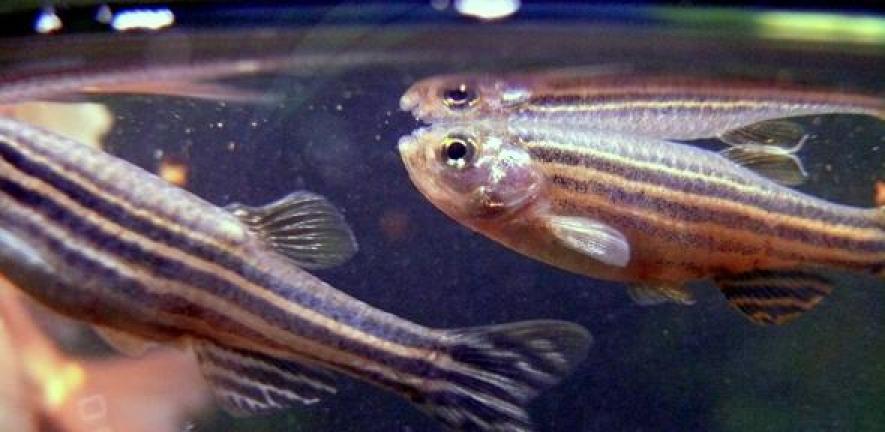
Why do we use zebrafish?
The zebrafish has many features that make it an excellent animal model for studying development in vertebrates. The embryos develop externally to the mother and are transparent, so they can be easily viewed and manipulated. Compared to frogs the organisation of the zebrafish embryo is simple, and they develop more quickly. Zebrafish grow to maturity and are able to breed within two to three months. They also produce large numbers of offspring – a female zebrafish can lay up to 200 eggs a week.
Like the mouse, the zebrafish is suitable for genetic analysis, and is a valuable animal for creating genetic models of human diseases. Although the zebrafish genome is only half the length of the human genome, the genetic structure is remarkably similar. Many genes responsible for human diseases often have equivalents in the zebrafish. The use of zebrafish allows us to use a less sentient animal in research.
It is easy to produce mutations in zebrafish, and screening programmes have been developed to find mutations that affect particular biological systems, such as the development of the nervous system.
Information adapted from AnimalResearch.info
What do we study?
Neurodegenerative diseases
Huntington’s disease is a neurodegenerative disease that causes difficulties with behaviour, feeding and communication, and abnormal movements, getting progressively worse and leading to premature death. There is no cure and treatments relieve only some symptoms.
The disease is caused by a defective gene which encodes huntingtin, which is toxic to cells in its mutant form. Professor David Rubinsztein is using zebrafish to model the disease, and in particular to see whether it is possible to stimulate a process known as autophagy (‘self-eating’). In this research the mechanism where cells ‘eat’ defective material, including mutant huntingtin, is being investigated as a means to alleviate the disease.
Tuberculosis
Professor Lalita Ramakrishan uses zebrafish to study tuberculosis (TB). The disease affects millions of people worldwide and without treatment, many of these will die. TB is on the increase worldwide, with the emergence, too, of multi-drug resistant strains. We tend to associate human TB with the lungs, but in fact it can affect almost all of our organs.
Fish are affected by a close relative of the human TB bacterium. Understanding how TB works in fish, and how to prevent it and treat it in fish, will take us a step closer to solving a major health problem in humans.
